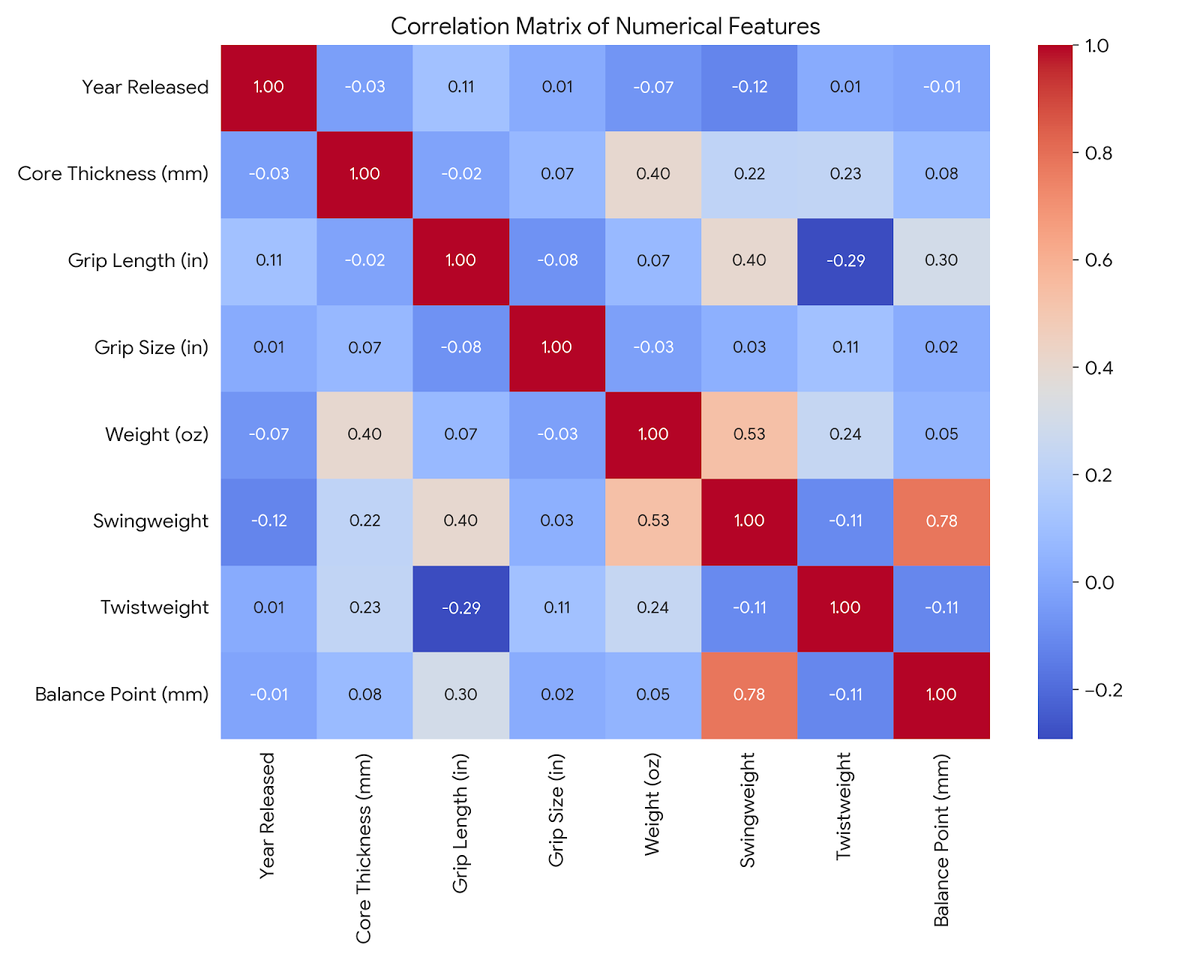
An Empirical Analysis of Pickleball Paddle Design and Performance Characteristics
|
|
|
Time to read 3 min
|
|
|
Time to read 3 min
This report presents an empirical investigation into the design trends and performance characteristics of modern pickleball paddles. Using a dataset of 325 paddles, this study employs statistical analysis and unsupervised machine learning to identify key market trends and to quantify the relationship between paddle geometry (shape) and a set of physical performance metrics. Key findings indicate a market-wide technological shift towards "Gen 2" thermoformed construction and a measurable trend towards paddles with higher swingweight and twistweight. K-Means clustering successfully segmented the market into three distinct performance profiles ("All-Court/Fast," "Control/Forgiving," and "Power/Plow-Through"). Subsequent proportional analysis revealed a strong correlation between paddle shape and cluster membership, demonstrating that specific geometries are intentionally engineered to meet distinct performance goals. These findings provide a quantitative framework for strategic product development and market positioning.
The pickleball paddle market has experienced rapid technological evolution. To remain competitive, manufacturers such as Coretek Pickleball LLC require a quantitative understanding of prevailing design trends and the interplay between a paddle's physical attributes and its performance profile. This study aims to provide such an understanding by analyzing a comprehensive dataset of contemporary paddles. The primary research question investigates whether a paddle's shape is a significant determinant of its performance cluster, as defined by its static and dynamic physical properties.
The initial dataset (deepseek_cleaned (1).csv) underwent a data quality assessment. A feature reduction process was implemented to create a focused dataset for modeling. A correlation matrix revealed a high positive correlation (r = +0.62) between Swingweight and Balance Point (mm), leading to the removal of the latter to reduce multicollinearity. A final, simplified dataset (simplified_paddle_dataset.csv) was generated for analysis.
Data was grouped by Year Released (2021-2025) to conduct a longitudinal analysis. Changes in the distribution of categorical features (Build Style, Shape) and trends in the mean of key numerical performance indicators were examined using descriptive statistics and data visualization.
To segment the market based on performance, K-Means clustering was employed. Key steps included:
StandardScaler to normalize their influence on the clustering algorithm.
Twistweight and Swingweight over the five-year period.The algorithm partitioned the dataset into three statistically distinct performance profiles:

Proportional analysis revealed strong, non-random correlations between shape and cluster membership:
The results of this analysis indicate that the pickleball paddle industry is not arbitrary in its design philosophy. The strong correlation between a paddle's geometric shape and its performance cluster assignment demonstrates a clear case of "form follows function," where specific shapes are intentionally engineered to produce desired physical characteristics. The market-wide trend towards higher twistweight and swingweight suggests a consumer demand for paddles that offer both stability and power.
For a specialized manufacturer like Coretek Pickleball LLC, these findings present clear strategic pathways. The data provides a quantitative baseline for product development. For instance, entering the "control" market segment is most effectively achieved via a Widebody design, while the "power" segment is best addressed with an Elongated or Extra-elongated shape.